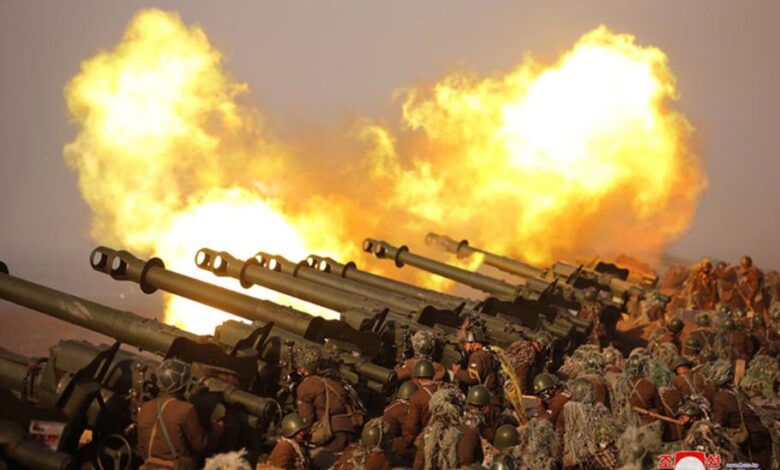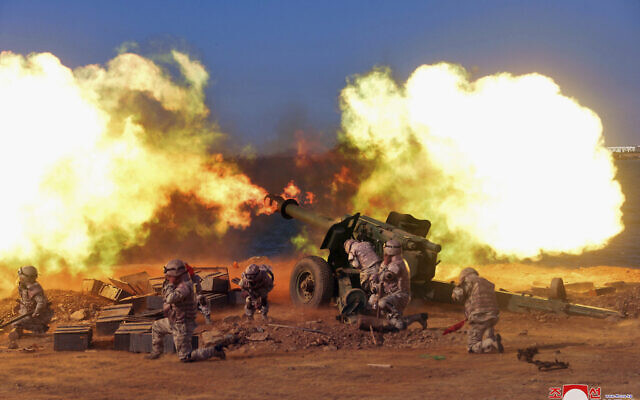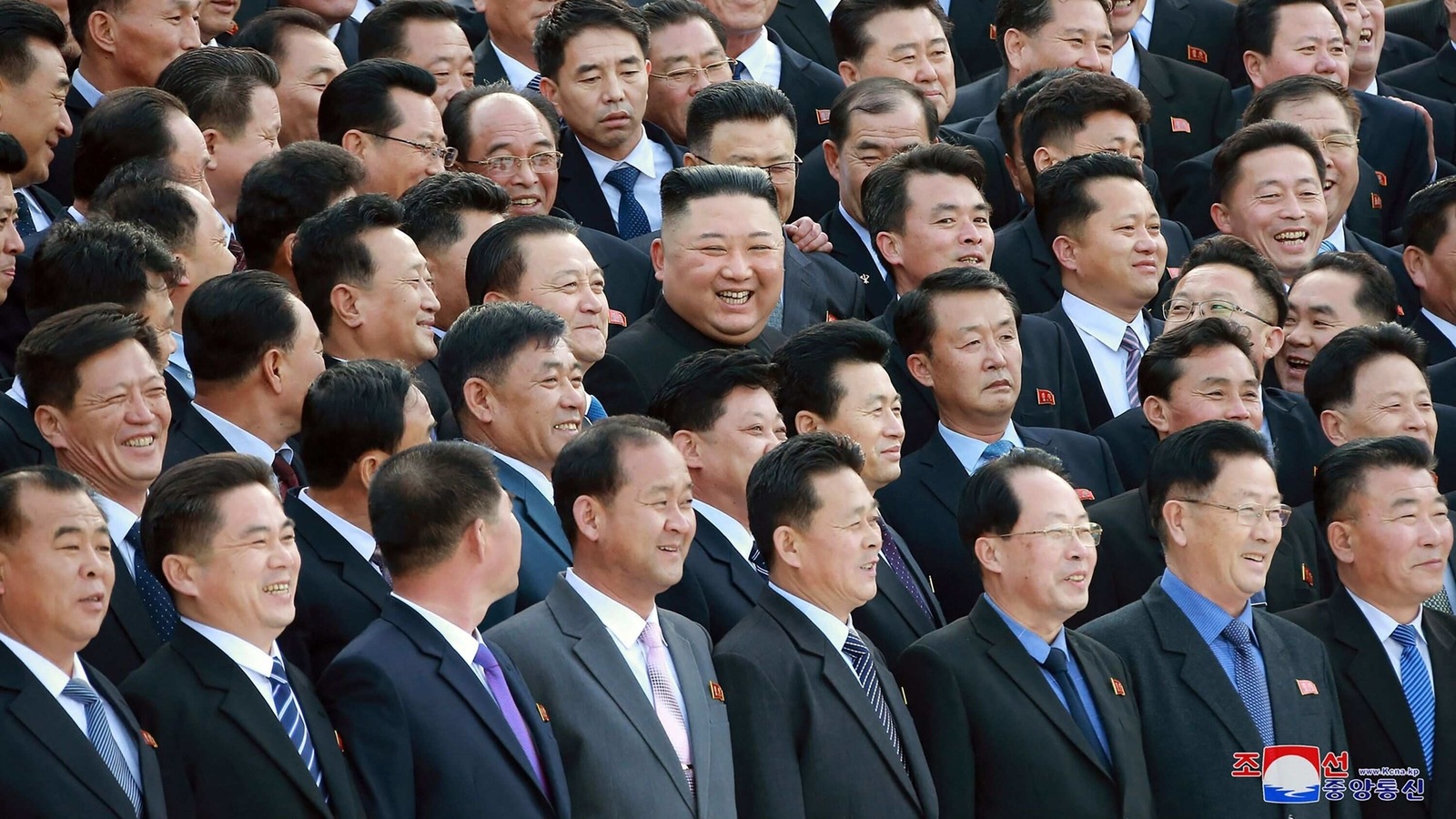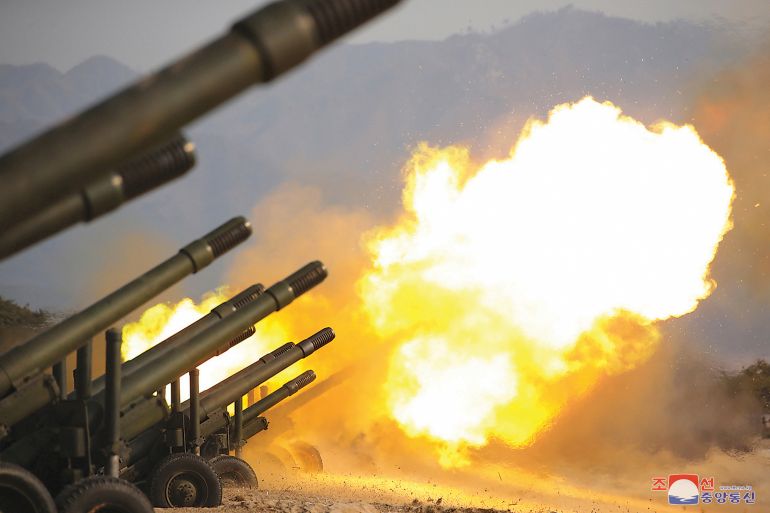Tensions Escalate, South Korea Issues Shelter Order Amid North Korea’s Artillery Firing And Alarming Shift in Relations
Recent events have heightened tensions on the Korean peninsula as North Korea fired over 200 artillery rounds into the sea near a contested maritime border with South Korea. The provocative act led to an evacuation order for residents of two South Korean islands amid an unspecified "situation." The South Korean defence ministry, while refraining from confirming the order's trigger, left uncertainty about whether it stemmed from North Korea's artillery firing or was a response to South Korean drills. These developments in North Korea indicate a significant departure from decades-old policies and a notable shift in its approach towards relations with South Korea. The December 2023 Party plenum formalized changes that could see North Korea treating the South as a separate, enemy state, challenging the longstanding status quo.

South Korea has instructed residents of two of its islands to seek shelter following the firing of over 200 artillery rounds by North Korea into the sea near a tense maritime border.
The South Korean defence ministry has not confirmed whether the evacuation order was prompted by North Korea’s artillery firing or South Korean response drills.
A text message sent to residents, verified by an island official, mentioned “naval fire” to be carried out by South Korean troops starting at 3 p.m. (0600 GMT) on Friday.
Yeonpyeong island, situated just south of the disputed Northern Limit Line (NLL) sea border, reported that the evacuation directive came at the request of the South Korean military.
Despite the artillery firing by North Korea, there were no reported civilian or military casualties or damage in South Korea, as stated by the country’s military during a news briefing.

A spokesperson for the South Korean Joint Chiefs of Staff characterized the North’s actions as “an act of provocation that escalates tension and threatens peace on the Korean peninsula.”
The North Korean artillery shells landed on the northern side of the disputed maritime border, according to spokesman Lee Sung-joon. He emphasized that the South Korean military, in collaboration with the U.S. military, has been closely monitoring North Korea’s activities along its shores.
The spokesperson issued a warning, stating that South Korea would take “corresponding measures” in response to North Korea’s provocations.
The incident occurs within the context of broader tensions, suggesting a potentially concerning shift in North-South relations.
COMBATIVE WATERS
The South Korean military informed the village about firing at sea by the South Korean military following an unspecified “situation” near the border, as per the official. However, it remains unclear whether this was part of a drill or had another underlying cause.
Yeonpyeong, housing just over 2,000 residents and stationed troops, is situated approximately 120 km (75 miles) west of Seoul and is accessible by ferries with a journey time exceeding 2.5 hours.
The waters adjacent to the disputed Northern Limit Line (NLL) have been a recurring site for deadly clashes between North and South Korea, involving skirmishes with warships and the sinking of a South Korean navy corvette in early 2010, attributed to a North Korean torpedo.
In November 2010, North Korean artillery launched numerous rounds at Yeonpyeong island, resulting in four fatalities, including two civilians, marking one of the most severe attacks since the Korean War’s conclusion in 1953.
North Korea claimed provocation from South Korean live-fire drills dropping shells into its territorial waters.

Initially established as an unofficial border at the end of the 1950-53 Korean War, the NLL wasn’t contested by Pyongyang until the 1970s when it began violating the line and advocating for a border further to the south.
Residents of Baengnyeong island, located to the far west of Yeonpyeong and also close to the sea border, received similar instructions to seek shelter, according to a village official, with a population of around 4,900.
In recent days, North Korea has increasingly warned of the Korean peninsula’s situation heading toward war due to perceived provocative actions by the U.S. and South Korean militaries. Both Koreas have pledged robust military responses if faced with an attack.
Shift In Diplomatic Response
In November, North Korea declared the nullification of an agreement signed in 2018 by the leaders of the two Koreas, aimed at de-escalating tension and preventing the accidental outbreak of war, after the South announced the resumption of drills near the border.
The initial agreement included a commitment to cease military drills near the border, encompassing sea borders off the west and east coasts.
This is a significant shift with ominous implications; North Korea is in the process of redefining its approach to relations with South Korea.
These changes involve alterations to policies and government structures that would effectively treat the South as a distinct adversary, departing from decades of established norms.
Analysts suggest that such modifications may lead to North Korea’s foreign ministry taking charge of South Korean relations, potentially laying the groundwork to rationalize the deployment of nuclear weapons against Seoul in any future conflict.
Since the conclusion of the 1950-53 Korean War in a stalemate, both nations have maintained distinct policies, treating each other differently than other countries.
This has involved the use of specialized agencies and ministries for managing inter-Korean relations instead of relying on their foreign ministries. Traditionally, both nations have embraced policies envisioning a future peaceful reunification, typically contemplating a single state with two systems.

However, in statements made during a year-end party meeting last week, North Korean leader Kim Jong Un asserted that peaceful reunification is unattainable.
He declared a “decisive policy change” in relations with the “enemy” and instructed the military to be prepared for pacification and occupation of the South in the event of a crisis.
The alterations in policy could serve to justify North Korea’s threats of using nuclear weapons against the South, a stance it has increasingly taken in recent years, according to Hong Min, a senior researcher at the Korea Institute for National Unification in Seoul.
Hong suggests that if North Korea abandons the pursuit of peaceful unification and categorizes South Korea as a hostile enemy without diplomatic relations, the perceived contradiction of employing nuclear weapons against the same population would be eliminated.

The True Picture
Some analysts argue that North Korea’s pronouncements merely mirror the existing reality of two nations marked by profound divisions and disparities.
According to Rachel Minyoung Lee from the U.S.-based Stimson Center, North Korea’s recent indications of a substantial shift in its South Korea policy, as confirmed during the December 2023 Party plenum, not only acknowledged this reality but also formalized it.
The exact extent of the organizational changes remains uncertain, and some experts suggest that, since such rhetoric aligns more closely with the current status quo, there may not be a significant alteration in the already adversarial relationship between the two Koreas.
Previous periods of heightened tensions, such as the “fire and fury” phase of 2016 and 2017, have been occasionally followed by periods of détente and diplomacy, as exemplified by the 2018 and 2019 summits between Kim and the presidents of South Korea and the United States.
A South Korean unification ministry official commented that North Korea’s report on the party plenary meeting, stating that it would not consider the South as a counterpart for reconciliation and unification, contradicts the reality that North Korea has never genuinely pursued these objectives.
Traditionally responsible for South Korean relations, including intelligence gathering and propaganda efforts, the United Front Department (UFD) of the Workers’ Party of Korea might see a shift in its role.
Even if talks resume in the future, the announcement suggests that Foreign Minister Choe Son Hui, an experienced diplomat, could oversee relations with the South.
Michael Madden, a North Korea leadership expert, associates her expanded role with a significant event in 2019 when Kim visited the former inter-Korean resort near Mt. Kumgang.
Yang Moo-jin, president of the University of North Korean Studies, suggests that Choe’s involvement in “dismantling and reforming” entities linked to South Korea might indicate the foreign ministry absorbing those organizations and their functions.
There is speculation that the United Front Department and the Committee for the Peaceful Reunification of the Fatherland could be disbanded or see their roles significantly reduced, and North Korea might opt to exclusively engage with the United States.
While potential changes unfold, crucial UFD intelligence officials are unlikely to be sidelined, and the agency is expected to retain authority over certain key propaganda broadcasts and websites, according to Madden.

The Last Bit, North Korea’s redefinition of relations with South Korea marks a pivotal moment with implications for regional stability.
The shift in policy, confirmed during the Party plenum, could have far-reaching consequences, including the foreign ministry taking over South Korean relations and justifying the use of nuclear weapons in future conflicts.
While some argue that these changes may be more reflective of the existing reality, the evolving landscape raises concerns about the potential intensification of tensions on the Korean peninsula.
As the international community watches closely, the longstanding dynamics between North and South Korea appear poised for a transformation that could reshape the geopolitical scene in the region.




